It should have been a star-making moment.
You had NBA legend and future Hall of Famer LeBron James endorsing three Black female fashion designers — Fe Noel, Kimberly Goldson and Undra Duncan of Undra Celeste New York — as the trio created James’ first women’s basketball shoe, the LeBron 16, with Nike, as part of a collaboration fostered by Harlem’s Fashion Row, an agency bridging the gap between brands and designers of color.
The collaboration was announced at Harlem’s Fashion Row’s annual gala in 2018, taking place at Capitale in New York City. I was in attendance as the then-editor-in-chief of The Root, an African American news site that covered the gala alongside a multitude of press clamoring for a quote from James. As I watched the pro baller applaud these three designers, many hailed this as a moment that would elevate Black women in fashion to the stratosphere.

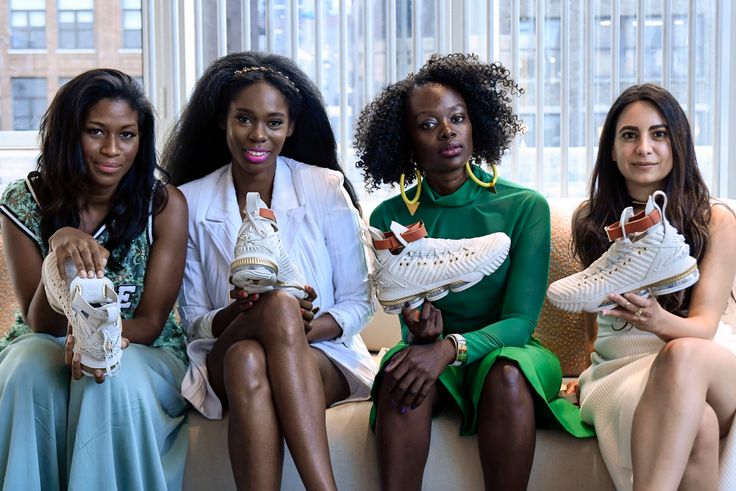
“Initially the expectations of it were very high,” Duncan told me this spring during a video chat. “Three designers with relatively small brands getting picked for a massive opportunity ... The exposure through [Harlem’s Fashion Row] was huge. We had half a billion press impressions. The shoe sold out in three minutes. The resale market sold the shoes for $1,000, $1,500. Anticipation from it was through the roof. We just knew it would be the thing that would change everything for us.”
“It was surreal,” Goldson said. “It was one of those experiences that you can’t even dream about, because you don’t even know that it exists. It showed what dreams you could dream as a young Black designer, that you could dream even bigger. It was such a surreal experience.”
But those expectations came crashing down once reality set in.
“All of them expected that their brands would blow up,” Brandice Daniel, CEO of Harlem’s Fashion Row, told me. “After that collaboration was one of our toughest years at HFR. Those moments are great, but they don’t signal, ‘OK, now I’m out of the woods.’”
After the gala, after all the press, after all the hype and attention, there was one thing missing — the money that would take their brands to the next level.
It never came.
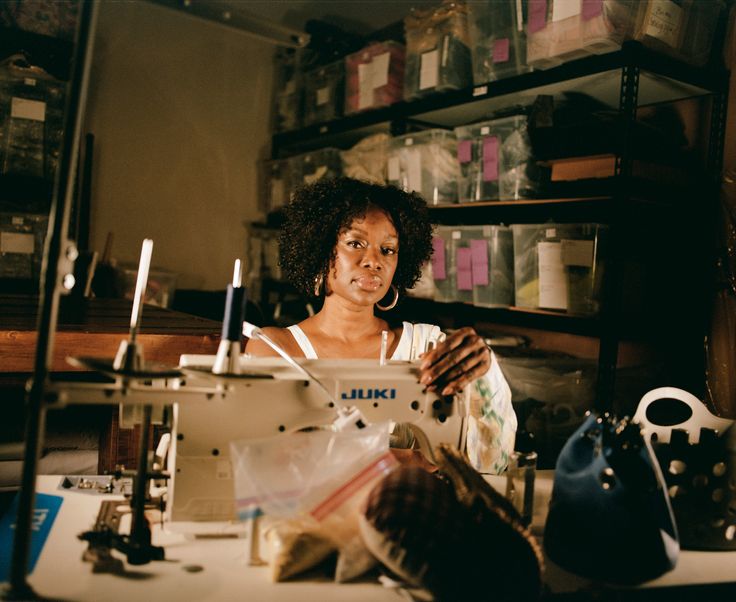
“In terms of pay [for the collaboration], that was barely there,” Duncan said. “But in terms of eyeballs and visibility and exposure? Sure. People love to talk about exposure. Exposure is necessary, but it’s not going to be the thing that changes your business.”
“What came out of [the collaboration] was a lot of work, a lot of showboating, a lot of shucking and jiving, talking to a lot of people. And I don’t blame anybody for this, but I maybe sold six more dresses than I sold before,” she said. “I don’t want to throw anyone under the bus, but I definitely barely got paid for it.”
Goldson was more diplomatic, pointing out that they “didn’t really have the knowledge, the tools, the resources to leverage that moment.” But she also wondered: Where was the money?
“I thought it just would have brought the funding — that the money would have come along with it,” she said. “That the success and the hype around it would not have been fleeting. That it would have propelled us to be even higher.”
But, Goldson said, they needed more: “More money, more exposure, a little bit more of everything was needed in order to move the needle.”

“One of the things I’ve learned as a collector is that fashion is a tough business for everybody, but that means it is even more challenging for members of underrepresented groups,” said writer Keli Goff, an avid collector of Black fashion memorabilia. “Making it in fashion is far more expensive than other creative pursuits because of all of the costs involved — materials and manufacturing, for example — which means it is even harder for those who don’t have financial cushions or connections.”
Today, Duncan, Goldson and Noel are not necessarily better off than they were in 2018. In some regards, they are doing worse. What little was gained from the LeBron collab was lost in the pandemic, as sales dwindled and investment never came. Noel is still making new designs, but earlier this spring, her site was selling some of her breezy, vacation-ready, high-end pieces at a discount. Goldson’s line has been paused, despite how well-loved her suits were at retailers. Duncan is still hanging in there, with a storefront in Newark, New Jersey, and deals with Saks Fifth Avenue and Bloomingdale’s. But, she admits, it hasn’t been easy.
“A lot of businesses are bootstrapping, but the fashion industry is not a bootstrapping business. You’re doing it to the detriment of the owner or designer. You need funding. Especially if you’re going into retail,” Duncan said. “Our [white] counterparts don’t have to do it. They go out, get funding, mess up, go out and do it again. It just is what it is. From the perspective of investors and buyers, I don’t get what their mindset is, what they think is so different, and why they don’t want to support talent.”
“I can say ‘slavery’ for everything, but I won’t,” she said. “But that’s what it’s giving.”
Culture Meets Vulture
When I first started following the world of Black designers and fashion, I was probably in my early 30s, reading blogs such as Claire Sulmers’ Fashion Bomb Daily. (I left newspapers to start a blog in 2007, like Sulmers, leveraging it in hopes of getting work. My blog eventually withered as I moved on to bigger, better full-time gigs, but Sulmers’ is still going strong, allowing her to ditch her dream of writing for Vogue and instead become one of fashion’s most influential buzzmakers.) I had grown up during the athleisure/urban streetwear boom that blew up the careers and labels of FUBU, Baby Phat, Karl Kani and Cross Colours, but as a kid, I didn’t follow much more than the glossy images of their adverts in Vibe magazine.
But as those groundbreaking brands can attest, Black fashion moves the culture. It stands out. It’s often imitated, yet Black designers continue to struggle to get their labels, their fashions, their dreams funded. Why can’t they get funding? It could be described as “it’s complicated,” but it could also be described the way Duncan alluded to when she mentioned slavery — it’s racist.
“My friends probably think I’m obsessed with these stories with Elizabeth Holmes and Billy McFarland from Fyre Festival, where they can be like, ‘Hey, I need a million dollars,’ and there’s somebody there to write a check, even if they don’t have a business, even if they don’t have traction,” Sulmers told me. “Even if their whole business is a lie. It’s a case for Black businesses in general, specifically Black-owned fashion businesses not given the capital or mentorship.”
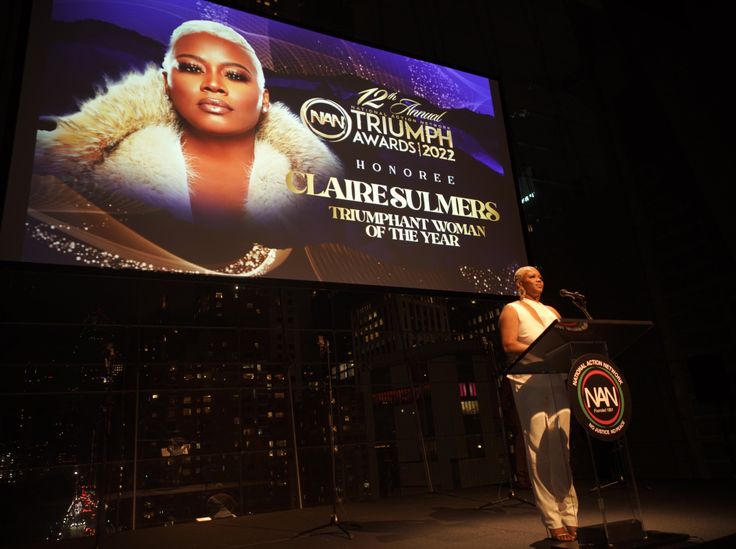
Fashion is a business of fantasy, excess and illusions. The gatekeepers don’t say that the barrier to entry is the color of one’s skin, because they don’t have to. They speak with their influence and their dollars, choosing to elevate copies of copies over originals, because those originals don’t fit what they consider “aspirational” and “ideal” in the world of fashion. The copying happens early and often, as Black designers see their original works imitated by everyone from leading luxury houses to Shein.
“If you look at the fashion landscape, the way it’s currently constructed, we‘ve been culturally appropriated for centuries,” said Goldson. “Right now you see this huge trend in streetwear, but it came from us. This is where I go back to embracing my Brooklyn roots. The whole hip-hop movement. We were that fashion you see on the runways today.”
If the designs were deemed worthy enough, Goldson pointed out, they’d be appropriated by European fashion houses. “Why not support the architects of these style [instead]? They were stolen from us, and then sometimes misappropriated at that,” she said. “I would say to investors: ‘Just take a look, take color out of it. Take that out of the equation and just look at the fashion. If you put the money behind the talent, it will be worth the investment.’”
In the past, some Black designers were approached with opportunities to grow with large investments. Tragically, though, designers like Willi Smith and Scott Barrie died young, at ages 39 and 52 respectively. Smith’s line Williwear at one point grossed sales of more than $25 million in a year, and Barrie had a deal with Japanese label Kinshido to open boutiques featuring his clothes internationally, but the deal never came to fruition. Smith and Barrie’s deaths not only caused the loss of a pair of visionaries, but ended the potential for mentorship by fashion stars who paved the way before. There have been more recent losses as well, like the 2021 death of Virgil Abloh, 41, who designed for Louis Vuitton and had his own line, Off-White.
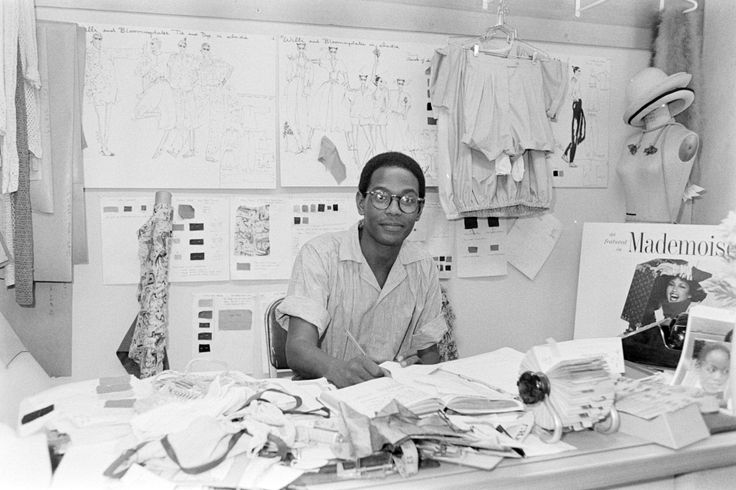
A badly executed licensing deal can be the death of a brand, and Black designers simply aren’t offered the same degree of leeway to make mistakes and come back from them.
“They don’t have a lot of opportunities to mess up,” Sulmers said. “If they do mess up, then they’re nailed to the cross. They say, ‘We invested so much in you and look at what you’ve done!’ Being a company that’s pitched and gotten investments, I know people are not investing in Black businesses, and definitely not Black female-owned businesses, seeing how hard it is and how harshly we’re judged.”
Despite my passion for clothing, 2024 was the first time I attended New York Fashion Week, even though I’ve lived here for more than eight years. I attended the star-studded shows of Badgley Mischka and Pamella Roland, where Real Housewives rubbed shoulders with ballerina Misty Copeland. Among the press and the usual fashionable subjects were the likes of singer/actor Vanessa Williams; her daughter, singer Jillian Hervey of Lion Babe; and, at a Luar show I did not attend (I wasn’t invited), Beyoncé.
There were models of color rocking the runways, and the designers I spoke to all endorsed the idea of diversity at NYFW. But most seemed to want to change the subject as quickly as their models changed clothes. Black women are more than fashionable, but we aren’t always of the fashion industry, because the industry doesn’t see us except through the lens of our proximity to whiteness. The farther you are from whiteness, the farther you are from the bag.
“Investors are leery about investing in the fashion industry to begin with,” said Goldson, who launched her line in 2012 after becoming a finalist on Season 9 of “Project Runway.” “They want manageable risk. Healthy return on investments. Add a Black owner, and they believe you’re only selling to Black customers no matter how much you try to convince them otherwise. They think that audience isn’t enough.”
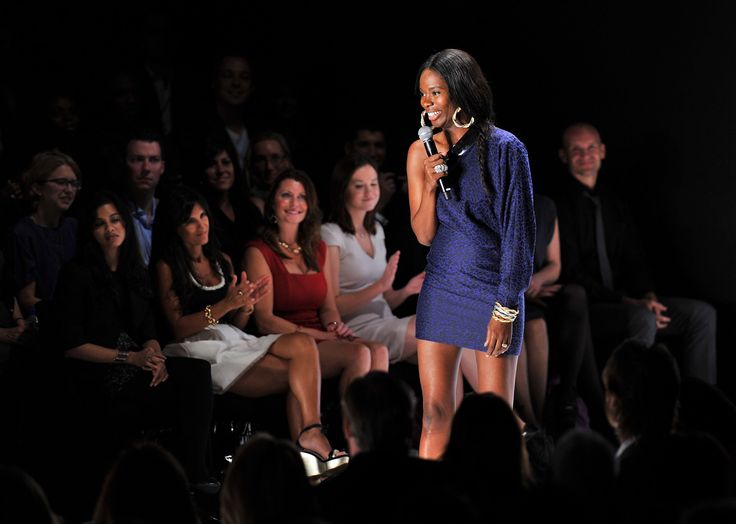
Before Goldson paused her clothing line this year ― a line that featured vibrantly printed, luxurious suiting for women ― she was in Saks Fifth Avenue. She said when her clothing was on the floor, it sold: “Women were buying the merchandise because it was great merchandise.” But there was a wrinkle. “We realized out on the floor, in stores, they didn’t have my Black face next to it.”
Goldson’s designs featured unique styles women loved, from vivid colors, gold, sparkle and shine to bright patterns and florals. She saw her brand as the Diane von Furstenberg of suiting. “It had all of those things, and non-Black customers did buy into it,” she said. “It was a little ludicrous that because we’re a Black-owned brand, business people think we’re only selling to Black customers.”
Daniel, the Harlem’s Fashion Row CEO, pointed out that designers who receive funds from the Council of Fashion Designers of America usually get some kind of financial backing or investment ― but rarely do Black designers get these opportunities.
“Even those producing collections sold in department stores are still missing the capital investment for them to be able to scale, for them to create core items, to hire a team,” Daniel said. “A lot are still operating like solopreneurs, and sometimes they may have one or two people on their team part-time, but that is a very difficult way to grow a business.”
How do others get funded? Well, there are angel investors, who are usually friends and family. There are wealthy spouses. There’s “rich Mommy and Daddy” money. And there are connections to wealth and financiers for people who grew up in that kind of environment. In light of all that, it’s not surprising that Black women ― who often don’t have access to vast generational wealth ― would struggle.
“Vera Wang and Victoria Beckham are both talented, but their businesses benefited significantly from having family members who could help financially,” said Goff. “Black designers rarely have that option, so they have an almost nonexistent margin for error when it comes to success. Great art and great fashion require taking risks, and if there is no margin for error, that discourages risk-taking, which also discourages the inclusion of the kind of people we need to keep art and fashion great.”
Even investment from other wealthy Black Americans is no guarantee.
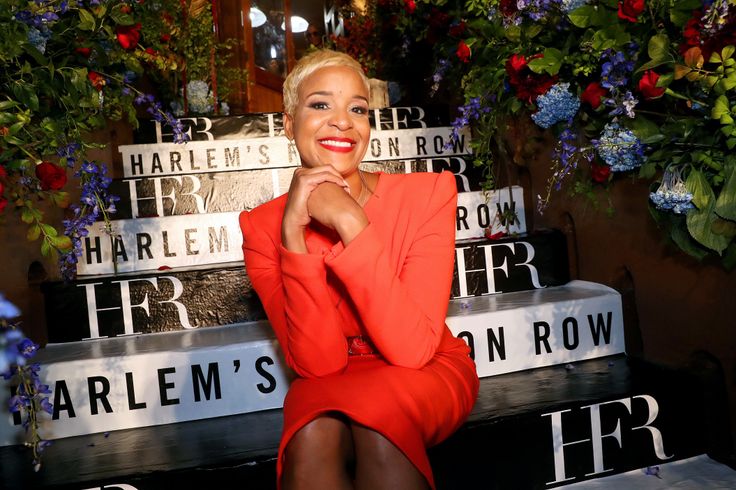
“I think that for a lot of wealthy Black people, it’s new. Some of this, not all, but some of this is first-generation. They can think back to a time when they didn’t have it, and one false move, everything they worked so hard for can be gone,” Sulmers said.
“There’s a handful of Black investors and they’re overwhelmed. Their attention is drawn elsewhere. Plus, often they’re thinking fashion is superficial and not a real business,” she said. “But look at the No. 1 richest in the world ― you have the owner of LVMH. Look at Tory Burch and Ralph Lauren, all these billionaires in fashion. We should be getting a piece of the pie and owning that we’re trendsetters.”
Daniel knows Black designers who can’t work with retailers because they don’t have the cash to produce a wholesale business. Others can’t afford to show their collections. And while you may not necessarily need an expensive fashion show anymore, Daniel points out that you still need a way to show your creations. She implores designers to “study business,” because it’s “so critical.”
“People just want to design, and get blindsided by all these other things that come with this, whether a designer makes it or not,” Daniel said.
But even if you study business, cobble together the funds, get a line out, promote it and even get it into a retailer, as Goldson and Duncan did, there are still barriers to success.
“There are also fashion gatekeepers, and they play a major role in who they deem will be successful,” said Goldson. “I mean the mainstream fashion media outlets, fashion councils and major hubs. If they don’t give their level of support and visibility to Black brands, then we have a hard time getting the fashion community on board as well.”
‘Girl, I’m Broke’
When I first met Jamaican-born designer Junny Ann Hibbert in 2017, it was at a Harlem’s Fashion Row boutique installation, featuring vendors associated with the agency. She was there alongside Salone Monet and her Italian-made nude shoes, once worn by Beyoncé (Monet has since shuttered her brand); jewelry maker Jam + Rico; Goldson and her gorgeous suits; Nroda and their glam sunglasses; and Erika Liles, then pitching the Everyhue Beauty makeup line she had alongside “Real Housewives of Potomac” star Gizelle Bryant.
I remember all these designers and vendors because I bought something, or wanted to buy something, from each of them. I coveted Monet’s shoes, but at the time, I couldn’t afford the $300-plus price tag. (Years later, I would buy a pair and become crestfallen when they didn’t fit my wide feet, so I sold them on Poshmark.) I bought two pairs of Nroda sunglasses and a pair of earrings from Jam + Rico that I’ve replaced twice because I loved them so much. I rocked Everyhue’s SPF-fortified tinted cream, once available at Target stores nationwide, for more than a year, but now it too no longer exists.
But Hibbert made the strongest impression. She made kaftans, beautiful and ornate, through her line, Junny NYC. They were made with bright, vibrant prints, some African, often mixed with other designs or materials. They looked like art pieces and were luxurious and delightfully fun. I wanted to buy one off the rack immediately, but she explained that she made them custom. She could come to my apartment, she said, to take my measurements and fit me for a garment.

I was delighted. I hadn’t had clothes specifically made for me since my mom used to stitch together my baby clothes with the leftovers of her 1970s outfits.
It started with two kaftans. Today I own five, along with one wrap blouse, an oversized tote, some pandemic-era face masks, a pair of military fatigue parachute pants and two sweatshirts.
Junny NYC launched in 2015, shortly after Hibbert’s job as director of sales was downsized at ESPN. Pre-pandemic, the future of the fashion line seemed bright. In fact, it had saved Hibbert in some respects after she lost her job. Broke and on her last $75, she bought fabric, made a kaftan and put it on Instagram. She got 14 orders right away.
“When I started the brand, everybody wanted to wear one of my kaftans,” said Hibbert, who dressed celebrities like actor Danielle Brooks (who once wore her kaftan). She was amassing a high-end clientele of powerful Black women, and things looked promising, so she forged ahead, taking the biggest bet on herself. “People weren’t wearing kaftans back then. They were calling them muumuus. Then I started dressing people all over the world, and the brand seemed to be growing and going in the right direction. It seemed to be in the right rooms and getting the right amount of buzz. And then COVID happened.”
“And Then COVID Happened” could have been the title of this story. A version of the same thing also befell Goldson and Duncan, as well as countless other Black designers who were on the climb.
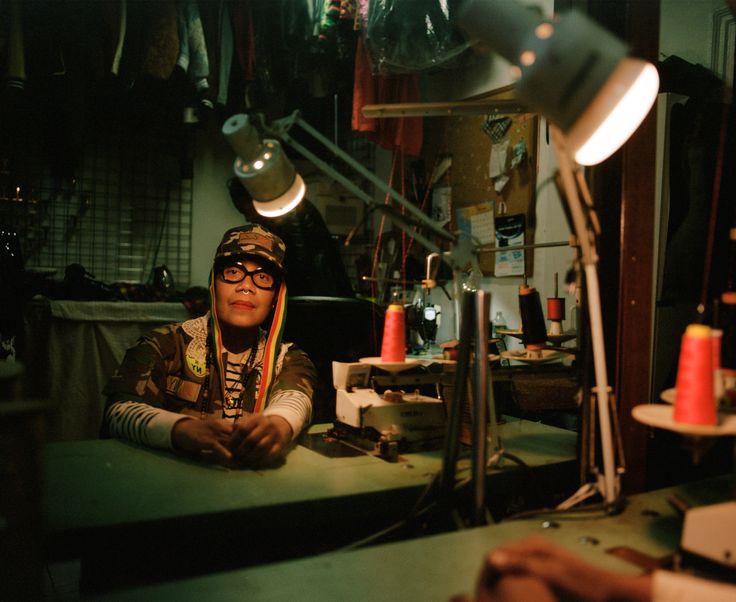
“During COVID, I sustained myself pretty much making masks and small items, but coming out of COVID I just couldn’t seem to rebound,” Hibbert said. “When you’re a woman of color, a woman of a certain age, and you’re a designer and an accidental artist, it’s not a straight road.”
Like Goldson and so many others, Hibbert’s primary issue boiled down to funding so she could scale up. She said that even with some sponsorship, “you’re still looking at $100,000 spent with no guarantee you’re going to get the orders.”
“It’s constantly putting in money, then waiting for that opportunity that’s going to take you to the next level,” she said.
Still, Hibbert tried to rally, even putting together a show on the official calendar for the first New York Fashion Week once things started opening up again after the pandemic. When she did her NYFW show, I donated to it, wanting to support one of my favorite Black designers who was now a friend.
Initially, the gambit of producing a fashion show seemed to pay off. Hibbert received a “She’s Next in Fashion” grant from Visa. W magazine and other trades called her a “designer to watch.” She was featured in The Wall Street Journal, and dressed ballerinas from the Dance Theatre of Harlem for The New York Times.
“I remember one day I opened my IG and Viola Davis had a ‘Woman Crush Wednesday’ post, and I was like her Wednesday crush,” Hibbert said. “So many amazing moments.”
But today, Hibbert and her brand are struggling — financially, emotionally. She still has to pay the bills, and the lack of sales has taken its toll.
“I did this amazing jacket and I sent it to someone, and she was like, ‘My dear, that’s lovely but I don’t think my friends are your type of client,’’’ Hibbert said. The piece was hand-painted, but Hibbert felt like people were “waiting for the Target version or something.”
Hibbert, like other Black designers, has had to learn that people covet her designs but want them for cheap. What chafes her is that these same individuals happily spend thousands on designer duds from the European fashion houses, the same designers that activists like Bethann Hardison have spent their lives challenging — demanding they hire more Black creatives and models.
“They won’t support the designers and their designs,” Hibbert said. “They’ll ask for a massive discount, but girl, I’m broke and you’re carrying the latest Dior purse!”
Hibbert’s brand lives on, but with bills piling up, she has had to return to her past career in media sales to get back on track financially. (I interviewed Hibbert for this story several weeks before she was hired by HuffPost’s parent company, BuzzFeed, as a consultant.)
She will continue to pursue her dream, even if it’s not exactly how she always pictured it.
“I invested all of my own money to build the business. I invested everything that I have. I gave it everything. I sacrificed everything, and the impact has just been devastating,” Hibbert said. “There is no other way to say it. That lack of funding, you can’t continue. You planted a seed, but suddenly it’s a drought and I haven’t been able to water it. I haven’t been able to grow the brand or hire the right people to help take the brand to the next level.”
Hibbert said that because of financial constraints, she can no longer produce her line as she had in the past, like doing on-demand or custom orders or creating artsy, streetwear-influenced T-shirts and hoodies.
“My brand is pretty much stagnated,” she said. “I’m trying to find work just to prop the brand up and keep on producing. I have no idea what the next year or two means for me when you’ve pretty much given everything to this dream.”
‘A Dream Deferred’
“Harlem,” a 1951 poem about the Black experience in America by the legendary Langston Hughes, poses a series of questions about what happens to “a dream deferred.” Does it dry up like a raisin in the sun, Hughes asks? Fester like a boil, then run? Sag like a heavy load, or explode?
When I look at the incredible potential within so many talented Black people that has long gone unnurtured, underdeveloped, undervalued and unsupported, I think of how relevant Hughes’ poem remains, and how it can be applied to so many ambitions, so many dreams of Black Americans.
Of the Black women I spoke to, Duncan seemed frustrated. Goldson seemed perplexed. Daniel seemed resigned, Sulmers befuddled. Hibbert was simply sad. And all of them sounded tired.
In the fashion industry, due to the barriers of access and money, a Black woman can’t be the ideal. She can’t be the archetype. And yet somehow, at the same time, she is ― at least in terms of how influential Black female designers remain, even as they watch others they’ve inspired go on to succeed where they don’t.
But as the saying goes, hope springs eternal. The realities of the industry don’t stop every dreamer from dreaming.

Designer Aisha McShaw makes timeless luxury suiting and gowns that stun. I met her in 2016, when we were both attending the Leading Women Defined conference in Miami. We hit it off, staying in touch over the years, becoming friends. When I was at The Root, she designed the gown I wore to my last Root 100 gala in 2018, and she designed the floral dress I wore to the White House Correspondents’ Dinner this spring.
More recently, she walked the red carpet of the Met Gala alongside longtime activist Rev. Al Sharpton. She rocked an enchanting, floor-draping, lime green gown she designed herself, while Sharpton wore a tux she also created.
“I’m still in tears because it has been a dream,” McShaw said of the Met Gala. “I kind of just do my work, never needing validation. I’m just quietly doing my work. I got to the Met Gala, and it was the perfect time for me to go, because I’ve developed a brand I feel that is still in the baby stages. But I feel like I’ve developed a brand that stands on its own.”
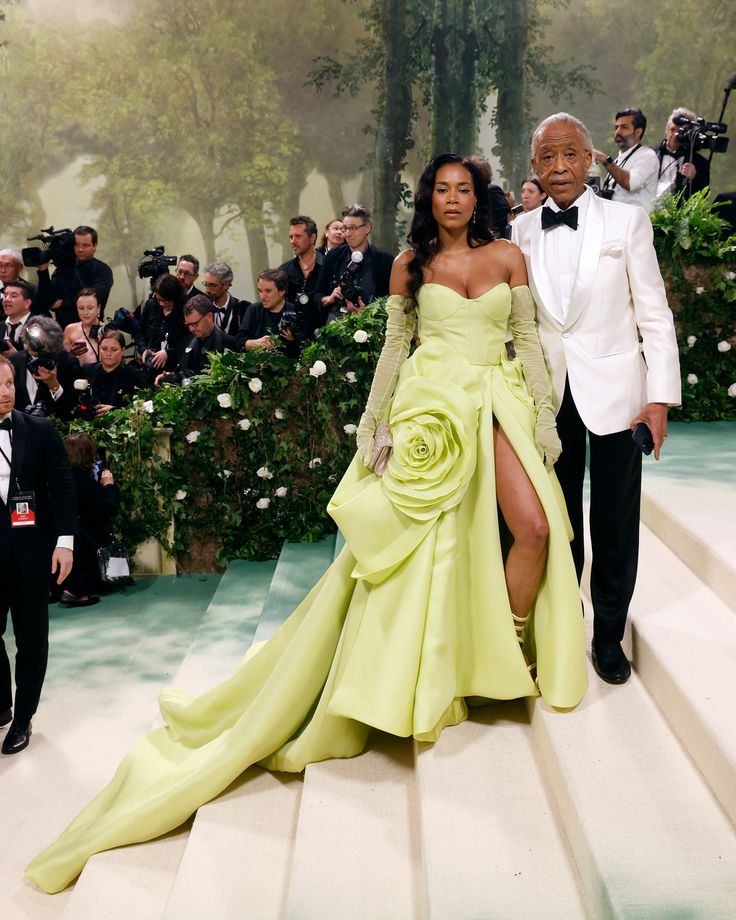
McShaw said she was not intimidated to walk the Met Gala’s carpet, because “I’m supposed to be there — a Black girl from Mount Vernon.” While this was a highlight for her brand, McShaw admits that since she left a career in finance to focus on her dream of being a designer, “it’s been hard.”
“Honestly I feel like I haven’t pushed enough to get funding, but I feel like I’ve been in front of people who know my work, see my work,” McShaw said. “I just feel like it’s a secret society. It’s cliquish. This industry is so cliquish. You’re not known as a designer unless you go to a school or you’re friends with the ‘who’s who.’”
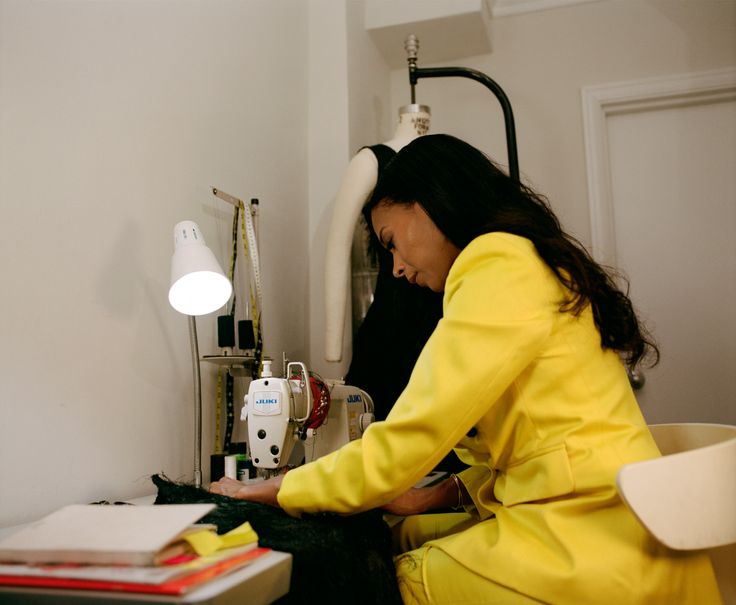
This “secret society” McShaw alludes to are the aforementioned gatekeepers. Fashion journalists and foundation leads. Funders and award judges. American and European fashion houses, corporate executives and would-be financiers. But even this society of tastemakers isn’t immune to criticism. Fashion faced its own racial reckoning toward the end of 2020, and some brands, like Undra Celeste New York, capitalized on it.
“I partnered with Raise Fashion and they got me in front of a lot of retailers. I intentionally only wanted two, Saks and Bloomingdale’s,” said Duncan, whose line started in 2015. “Saks has been a great partner. They have been very supportive for designers of color who came out of the incident. They understand that we’re very much underfinanced. They let a lot of things slide, or give a lot of runway to let you get it right. We’re now in year three and we’re doing OK with them.”
Duncan, who always wanted to be in fashion, went to Howard University, where she studied business. She went on to work in marketing, spending 15 years in corporate fashion, specializing in product development and design. Her line, Undra Celeste, was inspired by her Guyanese immigrant parents, whom she saw work domestic jobs during the week but “transform” into Diana Ross and Donna Summer on the weekends.
Despite her vast experience, her storefront and her deals with major retailers, Duncan is weary ― exhausted, even. Tired of the hoops she has to jump through as a Black female entrepreneur.
“Any one of us can walk into a Bloomingdale’s or Macy’s and shop brands that we’ve never heard of before. With Black designers, you have to be a unicorn. You have to be Sergio Hudson who’s dressing the first lady. You have to be LaQuan Smith who’s dressing these vixens,” Duncan told me.
“I recently did a collaboration with HSN,” she said. “A man had a beauty brand for women, a regular white guy who has some business acumen, and he raised $3 million for a beauty brand. You have to be a unicorn, and not even unicorns are getting funding. That’s what is required. For us, you gotta have a whole horse and pony show. And it’s exhausting. It’s really, really exhausting.”
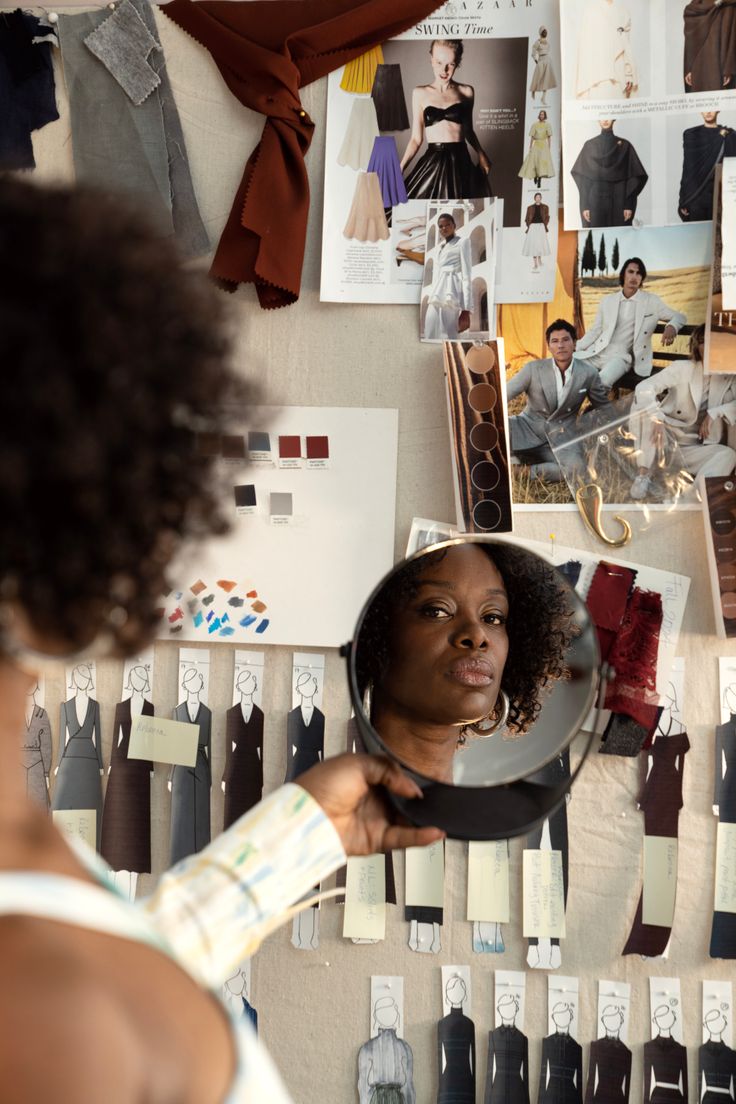
While she’s enjoyed her relationship with Saks, Duncan admits that Bloomingdale’s was harder, describing the experience as “very disheartening.” Her clothing was placed on the contemporary floor at their 59th Street store in Manhattan, which she described as being “very heavy in polyester” ― a cheaper, man-made fabric of which, despite its reputation, Duncan says there are nicer varieties now.
Despite this, she claims a buyer at Bloomingdale’s was dismissive and critical of her line. “We just gotta be mindful of the price point because we see you have some poly,” this buyer said, according to Duncan. “Mind you, her whole floor is poly, the cheapest faux leather at the same [luxury] price. [The buyer said,] ‘You gotta be really careful with your price point,’ claiming that the clothes can’t be digitally printed. But everything on the floor is digitally printed. I said, ‘Your entire floor is polyester.’ It’s really giving Zara sale season.”
“At a certain point, you have to stop caring, because they will try you as if you don’t know, as if I haven’t been doing this longer than you can probably read,” Duncan said. “You have to get to this point where you don’t care.”
Due to issues with the department store, Duncan is no longer going forward with Bloomingdale’s. In a statement to HuffPost about Duncan’s claims, the retailer spoke on their ongoing commitment to diversity: “Our team is dedicated to partnering with a diverse range of talent to ensure we offer the most competitive assortment.”
But the pressure to be twice as good, and for less, takes a toll.
“You have to know 10 times more than your counterparts,” Duncan said. “It’s very, very disheartening, because we know that there’s talent here. That there’s everything here. But like Miss Bethann said, there’s everything here except the money. It’s what makes the difference.”

